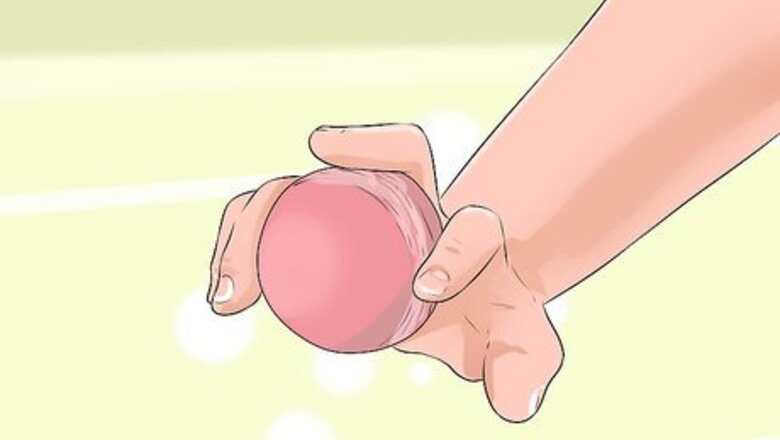
views
Gripping the Ball
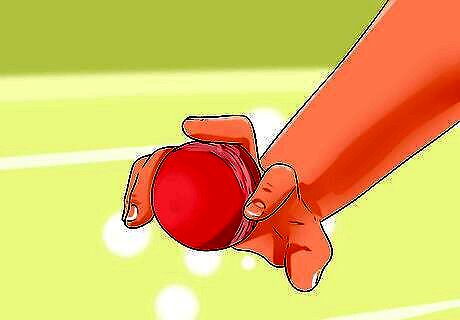
Position your fingers. Hold the ball between your index and middle fingers. Slot the ball between these fingers, so they’re split wide but comfortably and the seam runs between them horizontally. Bend your ring and little fingers, so the inside of your ring finger touches against the side of the ball. Your little finger should rest along your ring finger. “Two fingers down and two fingers up” is a quick way to remember the grip. Your index and middle fingers are straight and point “up,” while your ring and little fingers are bent and point “down.”
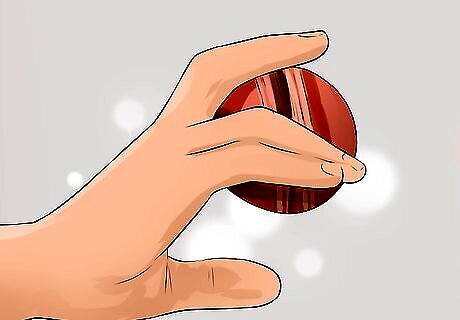
Keep a small gap between the ball and your palm. Make sure there is space between your palm and the ball. If it is pushed too far into your palm, then you won’t have the leverage you need to properly spin it. Your wrist and middle finger will do all of the work.

Keep a loose grip. Holding the ball too tight also prevents you from getting the right leverage and from controlling the spin. Let it gently rest between your middle and index fingers, with your thumb held close to the index finger but off the ball. Your whole hand will give the ball motion, but only these contact points will give it rotation and curve. Keeping your grip loose allows for more freedom of motion when you spin it.
Setting Your Approach
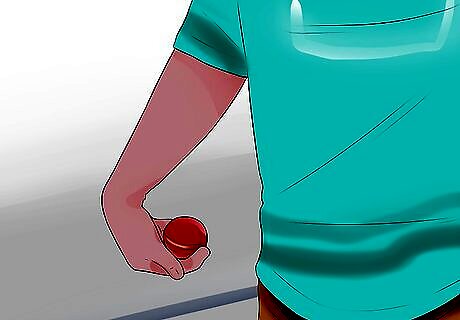
Get your wrist in position. Bend your wrist at a 90-degree angle to prepare your delivery, so that if you put your arm straight down and flat at your side, the palm of your hand (and the ball) face upwards. Holding your wrist at this angle will allow you to quickly rotate the ball from right to left when you release it. Remember that the leg break’s rotation comes from the motion of the wrist and middle finger, so set your wrist so you’ll be able to cock it correctly.

Line your feet, hips, and shoulders up with the target. Aligning the left side of your body with your target. This will help you aim and control your approach. It will also allow you to gather momentum when you rotate your body when you throw the ball.
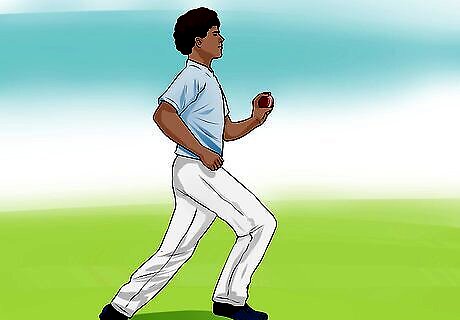
Set your approach and run up at a slight angle. Get your stance ready for your approach. Your run up cannot too straight nor too angled. Either extreme will prevent you from rotating the ball properly and from using your non-bowling arm for momentum.
Releasing the Ball
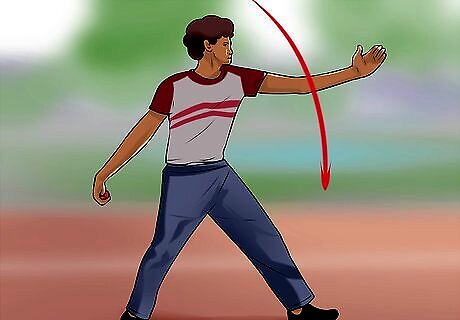
Use your non-bowling arm to steer. Right before you bowl, lift and slice your non-bowling arm down hard in front of you. Use your arm and the left side of your body to give you more momentum. Let this motion draw your bowling shoulder forward.
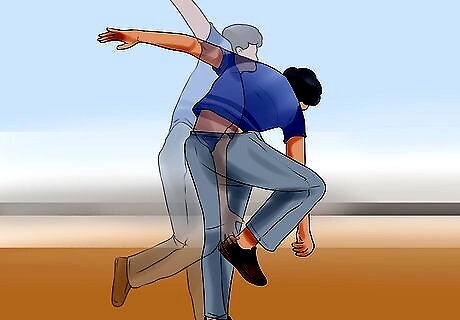
Rotate your body to the front. Use the left side of your body to guide your motion. As you throw, bring your back foot around and step forward. At this point, bring your bowling arm up and over your head towards the front.

Spin your wrist and ball from right to left as you release it. The movement is generated from your middle finger as your wrist turns, so the ball makes a counter-clockwise motion upon release. If bowled correctly, the ball will bounce quickly to the left when it hits the ground (in the direction of its spin). The back of your hand facing you the whole time, and your palm ends facing downwards. Your stride should be shoulder-length apart. You should complete your follow-through with your bowling shoulder facing the target.











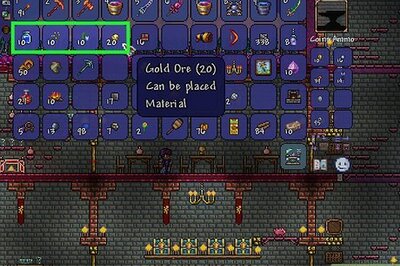



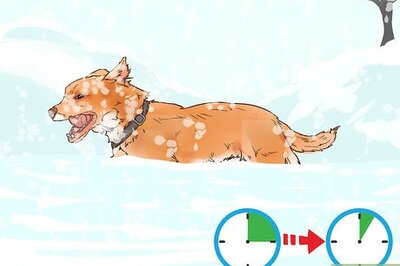



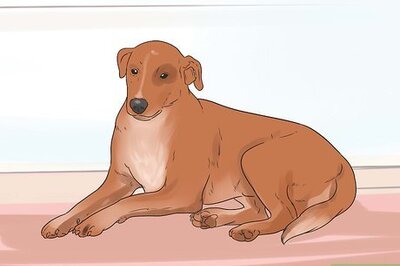
Comments
0 comment